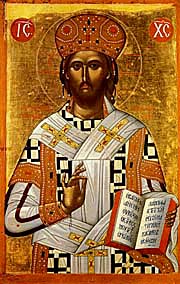The Institute for Christian Formation

Saint Thomas Aquinas, Priest & Doctor of the Church
Feast Day (Memorial): January 28
Follow us on Facebook to keep up to date with our news and newest resources!
wishing to be a Dominican, he escaped and finally went to Paris to study. In Paris he studied under the Dominican scientist and theologian, (Saint) Albert the Great. Thomas was large, and somewhat clumsy, and introverted, which led his peers to dub him the “dumb ox.” But his teacher, Albert, recognized Thomas’s brilliance. When Albert moved to Cologne in 1248, Thomas also moved there. In 1251 Thomas returned to Paris where he taught as a Master in Theology at the University of Paris.
In 1260, Thomas was called to the Roman Province of his Order. He taught at the Dominican priory in Orvieto until 1264. A year later, in 1265, he was asked to begin a Dominican program of study in Rome.
Thomas saw a great need for a systematic presentation of Christian theology, and in 1266 he began to write and dictate this effort. He continued this effort, and returned to the University of Paris in 1268. In 1272 he was sent to Naples to start a program of studies.
Thomas D’Aquino was born in the year 1225 in Roccaseca, Italy, the youngest son of a noble family. At a very young age, indeed as a child, his parents sent him to the Benedictine monastery at Monte Cassino. They hoped he would one day be the abbot of this monastery. This monastery was almost suppressed in 1239, and Thomas was sent to Naples to study at the university. It was there that Thomas was introduced to the Dominican Order, which had recently been established in 1216.
Thomas’s family did not want him to become a Dominican. But against their wishes, he took the Dominican habit around 1242 or 1243. In 1244 the Dominicans wanted to send Thomas to Paris to study. To prevent this, his family actually kidnapped him and confined him at a family castle at Montesangiovanni, where he was in captivity until 1246. At that time, still
On December 6, 1273, Thomas experienced some type of physical and spiritual phenomenon and he was unable to continue to write and teach. It was at this time that he discontinued his work, begun seven years before, of compiling a systematic presentation of theology. While this work was left unfinished, it remains one of the greatest theological works of all times – the “Summa Theologiae.” The Summa brings together Christian theology, Scripture, the writings of the Church Fathers, and the philosophy of Aristotle. The Summa consists of three major parts: 1) God as the source and creator of all; 2) Humans and their return to God; and, 3) Jesus Christ and the sacraments of the Church as the means for this return to God. The Summa includes 512 questions and contains 2,669 articles.
Thomas Aquinas was canonized in 1323. In 1567 Pope Pius V proclaimed him “Doctor of the Church,” and he was given the title, “Angelic Doctor.” In 1880, Pope Leo XIII proclaimed Saint Thomas Aquinas the patron of all Catholic educational institutions. He is also the patron of philosophers, theologians, and booksellers.
A wonderful quote from Saint Thomas Aquinas is, "To one who has faith, no explanation is necessary. To one without faith, no explanation is possible." We celebrate Saint Thomas Aquinas’ feast day (Memorial) on January 28.
In March of 1274, Thomas became ill while traveling to the Council of Lyons. He died March 7 at the Benedictine Abbey of Fossanova.
In addition to the Summa Theologiae, Thomas Aquinas’ works include Scriptural commentaries, commentary on the “Sentences” of Peter Lombard, lectures and commentaries on the works of Aristotle, the Summa Contra Gentiles, and even more writings.
Even if you have never read any of the above scholarly works of Saint Thomas Aquinas, chances are you are quite familiar with some of his work. He had a very deep prayer life and a strong devotion to the Eucharist. It was at this time in history that a cult of the Blessed Sacrament, with a strong emphasis on the real presence of Christ in the Eucharist, and being able to “see” this presence, developed. In the year 1264, Pope Urban IV inserted the Feast of Corpus Christi in the universal calendar. It is said that the pope asked Thomas to write the text for the Office and Mass for this feast. While sole authorship of these texts is sometimes questioned, they are nonetheless attributed to Saint Thomas Aquinas. These include “Tantum Ergo,” which is part of the longer hymn, “Pange Lingua,” and “O Salutaris.” These Eucharistic hymns are still sung in our worship today, and you are familiar with them, especially if you celebrate Benediction, and celebrate the Mass of the Lord’s Supper on Holy Thursday. The next time you have the opportunity, pick up a hymnal and look up these hymns. You will see the text attributed to Saint Thomas Aquinas!
Saint Thomas Aquinas
Fra Angelico
1438-1440
Collezione Vittorio Cini, Venice

Saint Thomas Aquinas
Carlo Crivelli, 1476

